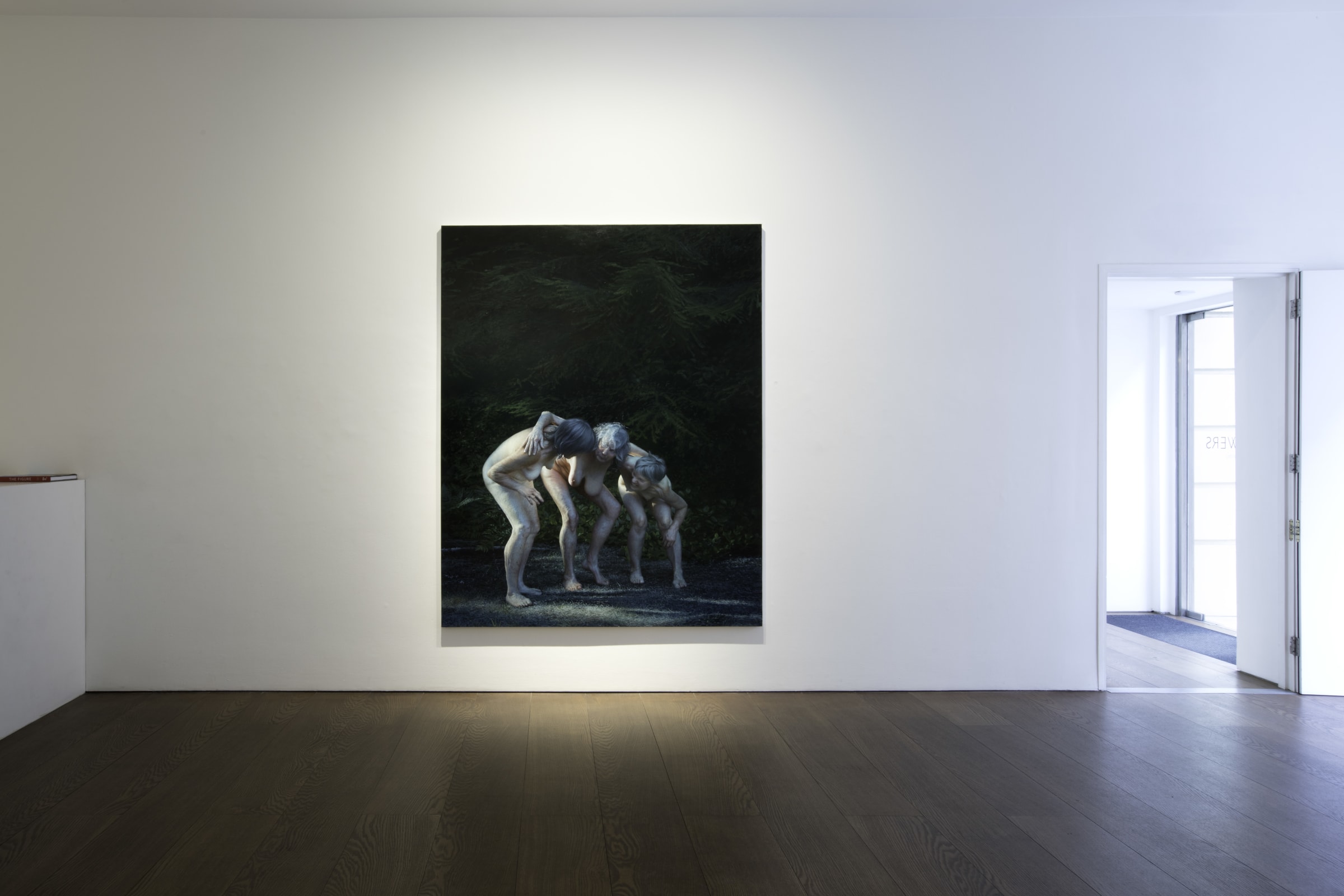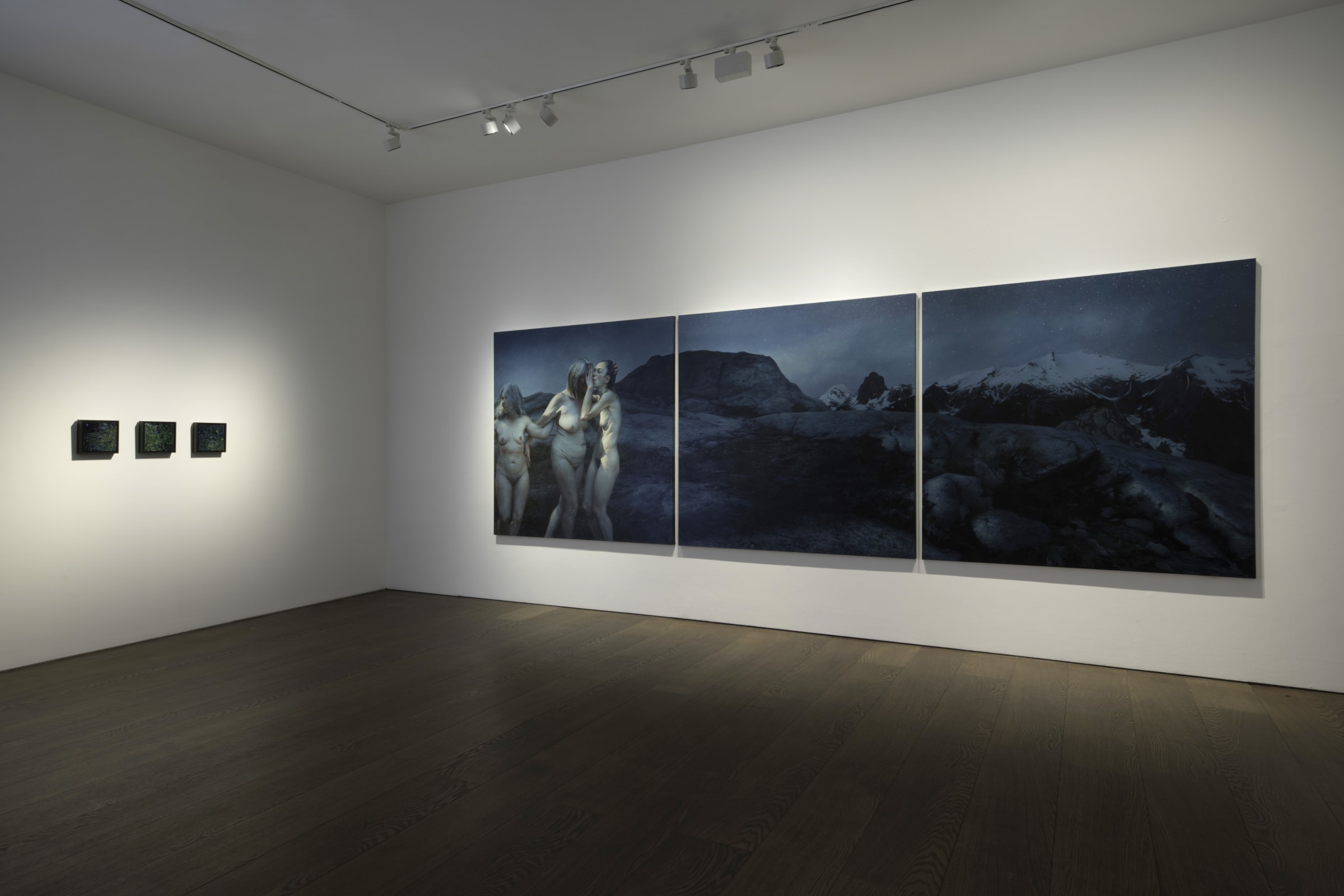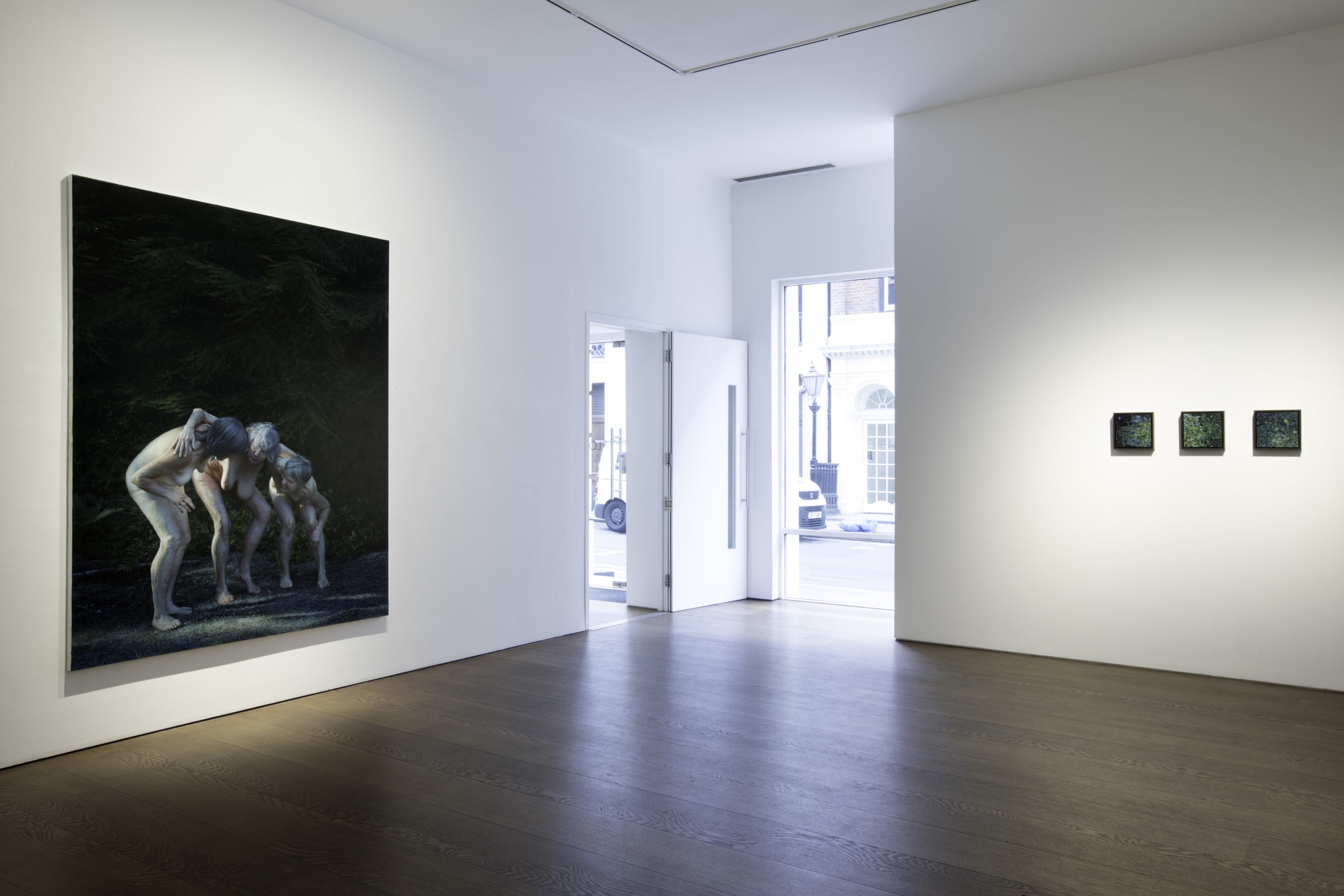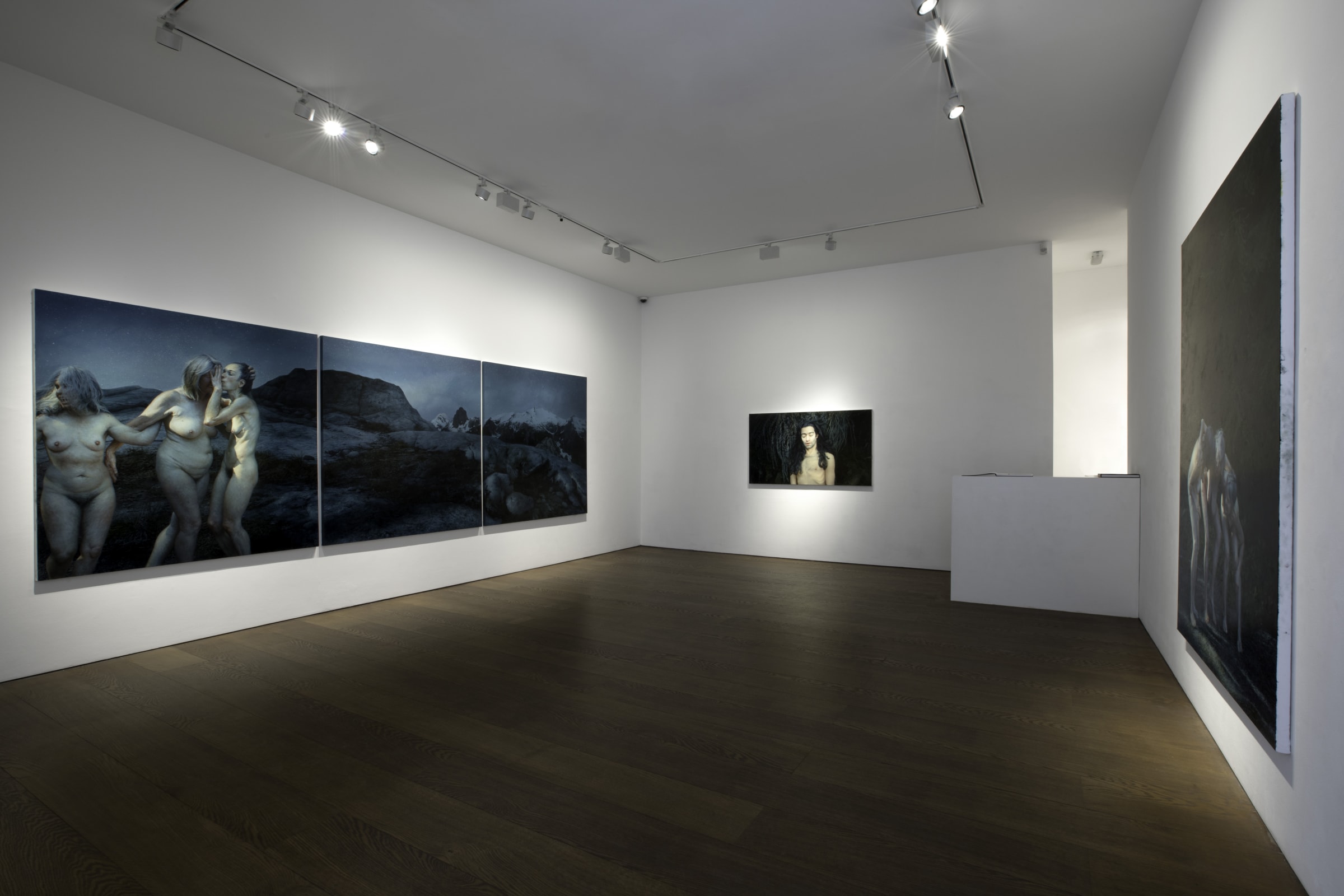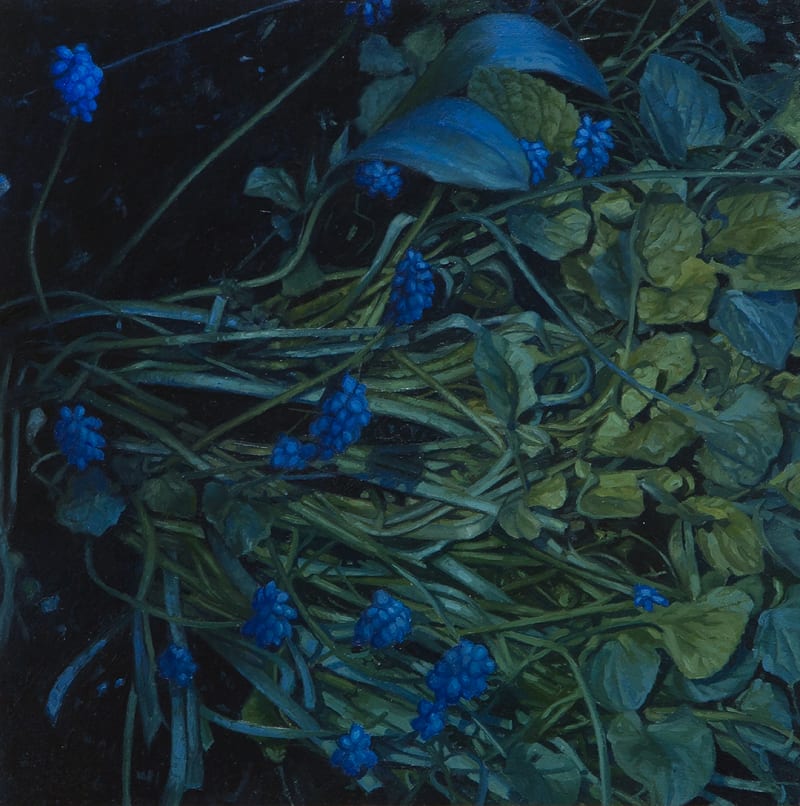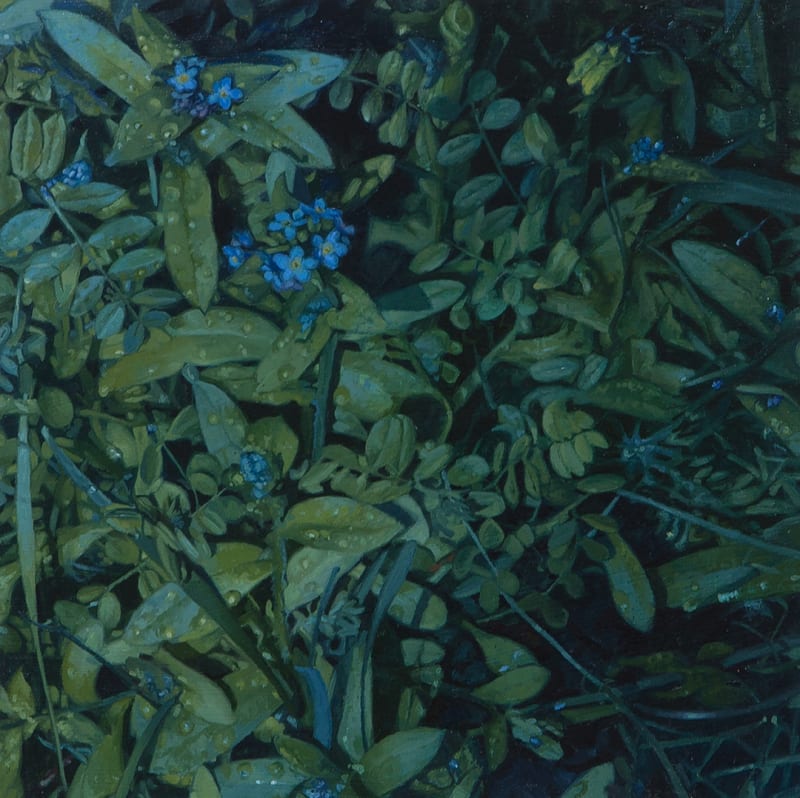Overview
Intimate, revealing and personal, the latest paintings by American artist Aleah Chapin explore the passage of time as seen through the body; depicting friends and relations, all of whom she has known throughout her life growing up in a unique island community on the US Pacific Northwest Coast.
Intimate, revealing and personal, the latest paintings by American artist Aleah Chapin explore the passage of time as seen through the body; depicting friends and relations, all of whom she has known throughout her life growing up in a unique island community on the US Pacific Northwest Coast.
Following on from her internationally renowned Aunties series, Chapin’s latest monumental canvases continue to open up a lesser-represented view of the female form, expanded to include the aging figures of women in the later stages of life. Set within a wild Pacific landscape, Chapin portrays the physical journey of the body in poetic terms, imbuing the forms of the older women with natural, sensuous vitality. The paintings in the exhibition Within Wilds portray mysterious scenes where elderly women perform joyful nymph-like dances against the backdrop of moonlit mountains and forests. Groups of intertwined figures jostle and cling to one another, and in the case of the painting There Were Whispers Among the Branches, they huddle together, apparently sharing secrets.
In a painting titled Under the Curve of Time, Chapin traces the effects of childbirth on the body, evoking not only the closeness of mother and child, but also a sensory connection to place and time through the soft carpet of forest grasses and fir trees stirring around the figures. Similarly, the warm bodily glow of the dancing trio of figures in Our Shouts Were Drowned in the Stars, (striking a pose reminiscent of Rubens’ The Three Graces,) brings to attention the cold, dark stone of the mountain range in the distance, smoothed and worn over millennia by the extreme coastal weather.
Following a recent return to live in the Pacific Northwest, Chapin has focused on the detail of her natural surroundings. Wildflowers found underfoot in this environment, such as Muscari and Taraxacum, are portrayed on smaller canvases. Painted in dark tones and covered in dew, the paintings summon memories of the fresh earth scent of the dawn forest; connecting the wildness and timelessness of the natural world with the lived experience of the physical human body.
Of Chapin’s work, artist Eric Fischl has said: “Aleah Chapin is the best and most disturbing painter of flesh alive today. The precision of her details, her insistence that no blemish, wrinkle, mole or lump be glossed over or hidden, she fearlessly observes aging and the reality of our physicality without any sense of regret or disappointment. In these times where plastic surgery, breast enhancement, anti-aging creams, and Spanx are the preferred solutions to dealing with the complex feelings and fears that come with diminishing power and the inevitability of death, Chapin’s paintings have to be seen as heroic and radical.”
ABOUT ALEAH CHAPIN
Born in 1986, Aleah Chapin grew up on an island north of Seattle, WA. She received her BFA from Cornish College of the Arts in 2009 and her MFA from the New York Academy of Art in 2012. Chapin attended a residency at the Leipzig International Art Programme in Germany and has exhibited her work in the US, the Netherlands, Germany and the UK. Recent exhibitions have included the 2016 Invitational Exhibition of Visual Arts, American Academy of Arts and Letters, New York; and The Ingram Collection: Bodies, Woking, UK. Aleah has recently won the Willard L. Metcalf Award in Art from the American Academy of Arts and Letters. She has been a recipient of the Posey Foundation Scholarship, Elizabeth Greenshields Foundation Grant and a Postgraduate Fellowship from the New York Academy of Art; Chapin won the BP Portrait Award at the National Portrait Gallery in London in 2012. She lives and works in Seattle.
Intimate, revealing and personal, the latest paintings by American artist Aleah Chapin explore the passage of time as seen through the body; depicting friends and relations, all of whom she has known throughout her life growing up in a unique island community on the US Pacific Northwest Coast.
